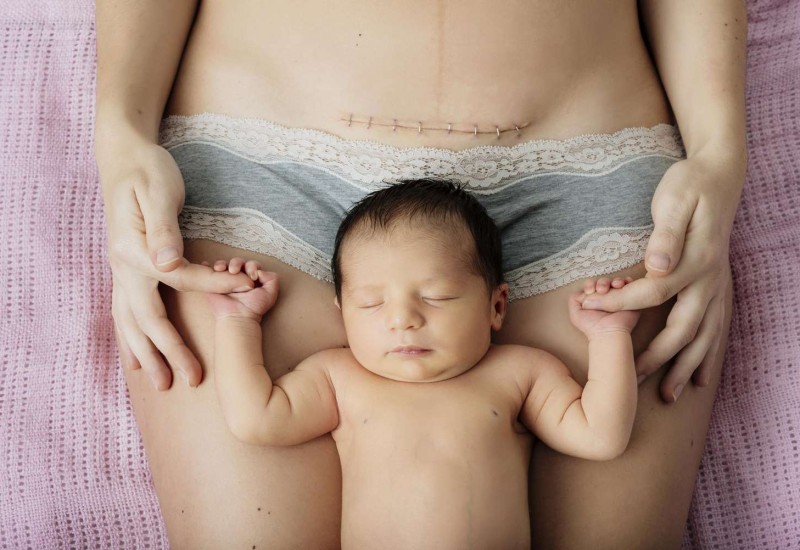
Specializations
Caesarean Section (C-Section)

C-Section
In some cases, where risk to the mother or baby is suspected during delivery Lower segment Caesarean section is recommended. There are a number of pros and cons to c-section delivery. But latest advances in medical knowledge and technology, caesarean has become a very safe procedure. Due to any reason if you are looking for a caesarean delivery in Noida, consult Dr. Bhumika Shukla- rated as best gynae in Delhi NCR.
Common reasons for a Caesarean section
A C-section or caesarean is a surgical delivery of a baby. It is indicated when there is a risk to the mother or the baby during delivery. There are pros and cons to it.
If your provider suspects you have a pregnancy complication, they may recommend a Caesarean. While it is not always necessary, it is often the safest method of delivery. Compared to vaginal delivery, a C-section can reduce the risk of complications, especially when your baby is born large or in a different position.
You can have a vaginal birth, but it may be hard for women who have certain health conditions or a history of pelvic trauma. Women with HIV or genital herpes may have trouble giving birth vaginally. Under such circumstances, usually a caesarean delivery method is preferred.
Increased risk of developing a blood clot under caesarean delivery
Having a caesarean delivery increases a woman's risk of developing a blood clot. These clots can travel to the lungs and cause problems such as chest pain, coughing, difficulty breathing and damage to the lungs.
During pregnancy, the uterus shrinks, making it more likely for clotting to occur. Women who have had C-sections are four times more likely to develop a blood clot than those who have given birth vaginally. This increased risk is related to several factors.
Women with higher blood pressure or a history of blood clots are more at risk. In addition, women who are overweight or smoke cigarettes increase their risk.
The risk of blood clots is greatest in the first six weeks after giving birth. Women who experience heavy bleeding after giving birth are also at risk.
Thus, it becomes inevitable to consult a gynae at the right time. Niraamaya clinic is situated in Noida, sector 104, so if you are looking to consult for thoughtful caesarean delivery in Noida, visit Niraamaya Clinic.
Increased risk of allergies
C-section deliveries have been associated with an increased risk of allergic disorders in childhood. Researchers have speculated that this might be due to the type of delivery. They also believe that the microbiome of newborn babies may have been impacted by the bacteria that are passed from the mother during a C-section.
Increased risk of obesity under caesarean delivery
Various studies have shown that an increased risk of obesity is associated with cesarean delivery. Although some studies have found a modest association, most have not been statistically significant. Several meta-analyses and systematic reviews have attempted to evaluate the relationship between CS delivery and obesity.
The authors used a large, longitudinal birth cohort to investigate the association between CS delivery and body composition at different age intervals. They examined body fat percentage (BF%) at 2 months, 6 months, and one year, and body mass index (BMI) at two and five years. They also investigated the potential confounding effects of macrosomia, which is a risk factor for CS.
Compared to vaginally delivered infants, those born by CS had a higher mean BMI at six months. However, there was no association between the mode of delivery and BMI at age one or two.
Longer recovery time
C-section recovery can be long, but there are ways to help the process go smoothly. One way to make the transition easier is to find a supportive group of friends or relatives who can assist you. It also helps to have a reliable medical team on your side.
Generally, you'll spend two to four days in the hospital after a C-section. Some women need more time, however. This can be due to complications during the procedure, or if there was an infection. If you don't feel well, it's important to speak with your doctor.
During the first few weeks after delivery, you will have to be careful not to place anything in your vagina. You should also avoid lifting heavy items.
After a C-section, you may experience bleeding, or vaginal discharge, for several weeks. It is a sign that your body is removing extra blood.
For caesarean delivery in Noida, visit Niraamaya Clinic.
